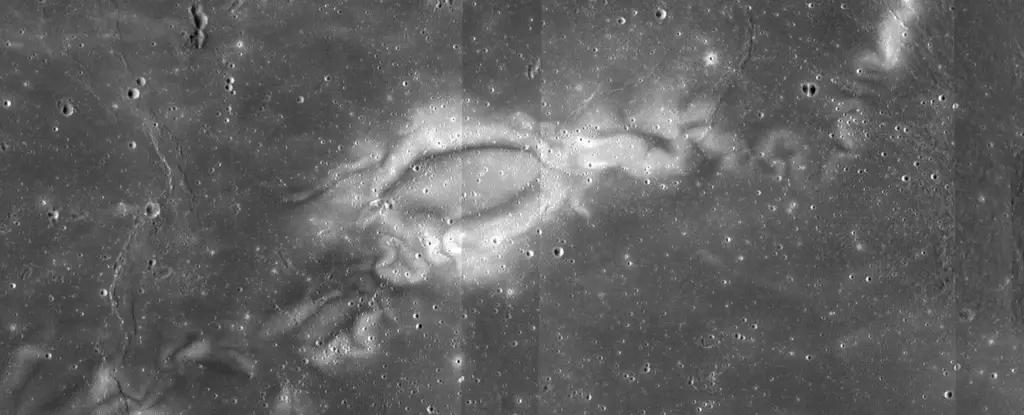The Moon has always fascinated humanity with its mysterious light-colored patches, known as lunar swirls. These unique features have puzzled scientists for centuries, leading to various theories about their origin and formation. However, a recent study by researchers at Stanford University and Washington University in St. Louis has shed new light on the enigma of lunar swirls.
Unlike Earth, the Moon lacks a global magnetic field to shield it from the Sun’s charged particles. When solar winds interact with the lunar surface, they cause chemical reactions that darken the rocks over time. This explains why most of the Moon’s surface appears grey and pocked. Nevertheless, certain regions on the Moon remain light-colored due to the presence of mini magnetic fields that protect them from solar radiation.
Previous studies attributed the formation of lunar swirls to micrometeorite impacts, creating magnetic barriers that reflect solar winds. However, researchers at Stanford and WUSL propose a different theory. They suggest that forces beneath the Moon’s crust, such as cooling lavas containing ilmenite, could be responsible for magnetizing the swirls and deflecting solar particles. This hypothesis challenges the conventional explanation and opens up new possibilities for understanding the origin of lunar swirls.
Experimental Evidence
Scientists have found radar evidence of underground rivers of cooled magma, indicating past volcanic activity on the Moon. By studying the cooling rates of ilmenite, a titanium-iron oxide mineral abundant in lunar rocks, researchers have demonstrated how metallic grains within the Moon’s crust can produce a magnetic field. This phenomenon, known as magnetizing effect, may explain the strong magnetic regions associated with lunar swirls and provide insights into their formation process.
The Lunar Vertex Mission
While much of our knowledge about the Moon’s localized magnetic fields comes from orbiting spacecraft, NASA’s upcoming Lunar Vertex mission aims to delve deeper into the lunar surface. By sending a rover to the Reiner Gamma swirl in 2025, scientists hope to collect direct evidence that could unravel the mystery of lunar swirls once and for all. This ambitious mission represents a significant step towards gaining a comprehensive understanding of the Moon’s geological features and magnetic anomalies.
The study of lunar swirls continues to captivate the scientific community, offering new perspectives on the Moon’s complex geological history and magnetic interactions. Through innovative research and upcoming space exploration missions, we are on the brink of unraveling the enigma of these bright patches on the lunar surface. The quest to understand the mysteries of the Moon’s swirls reminds us of the endless wonders of the cosmos and the endless possibilities that lie beyond our planet’s familiar borders.


Leave a Reply